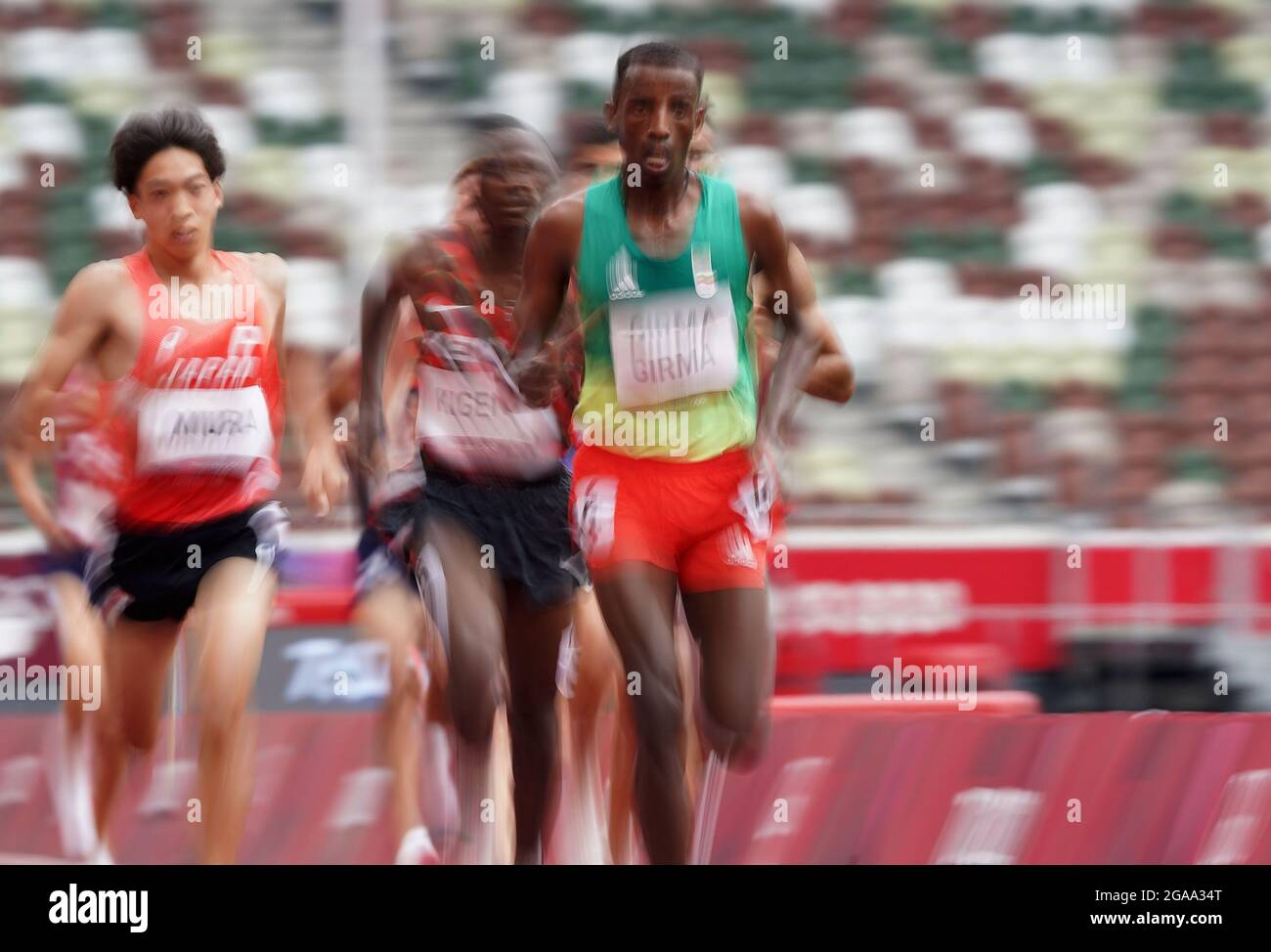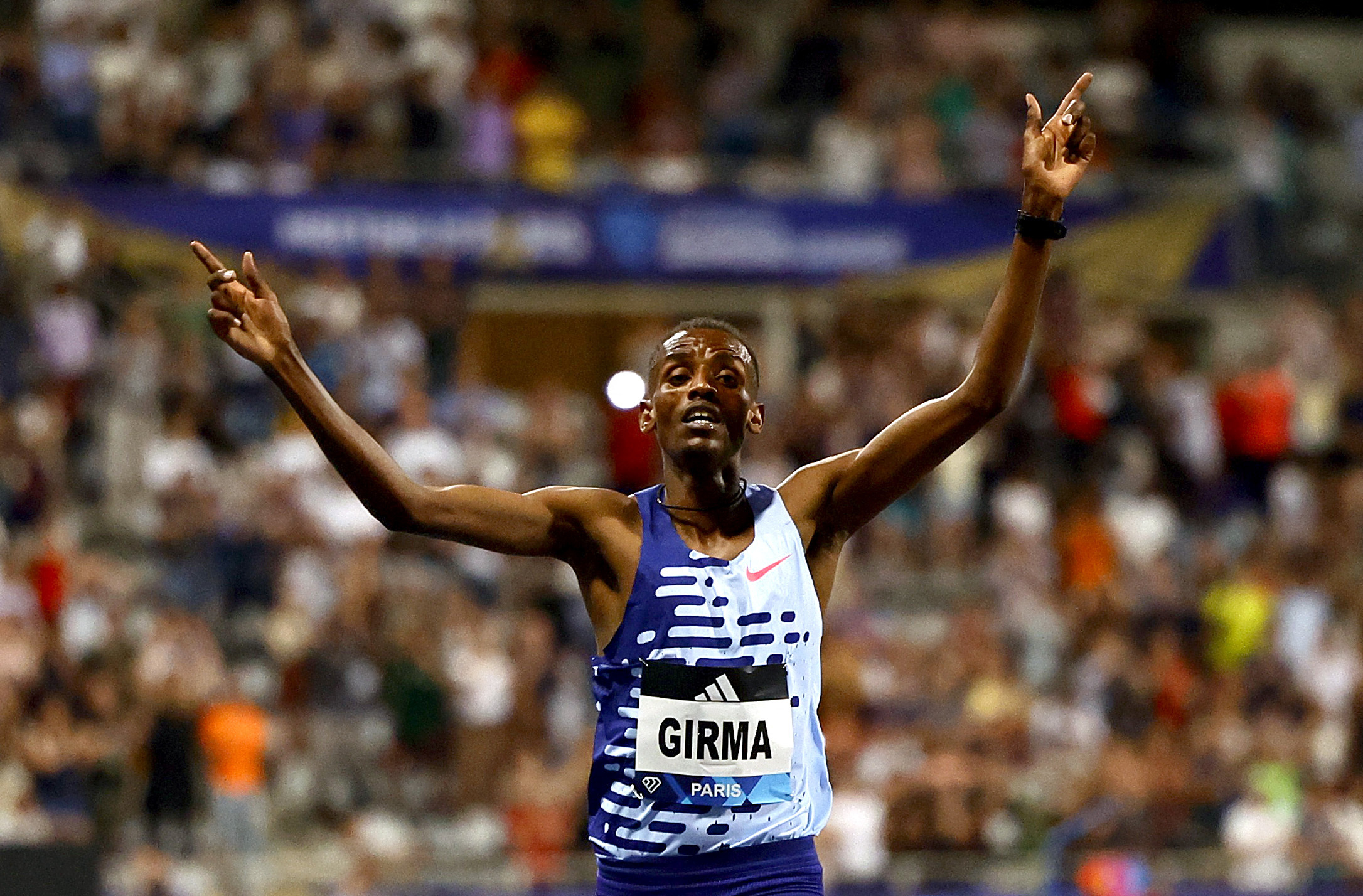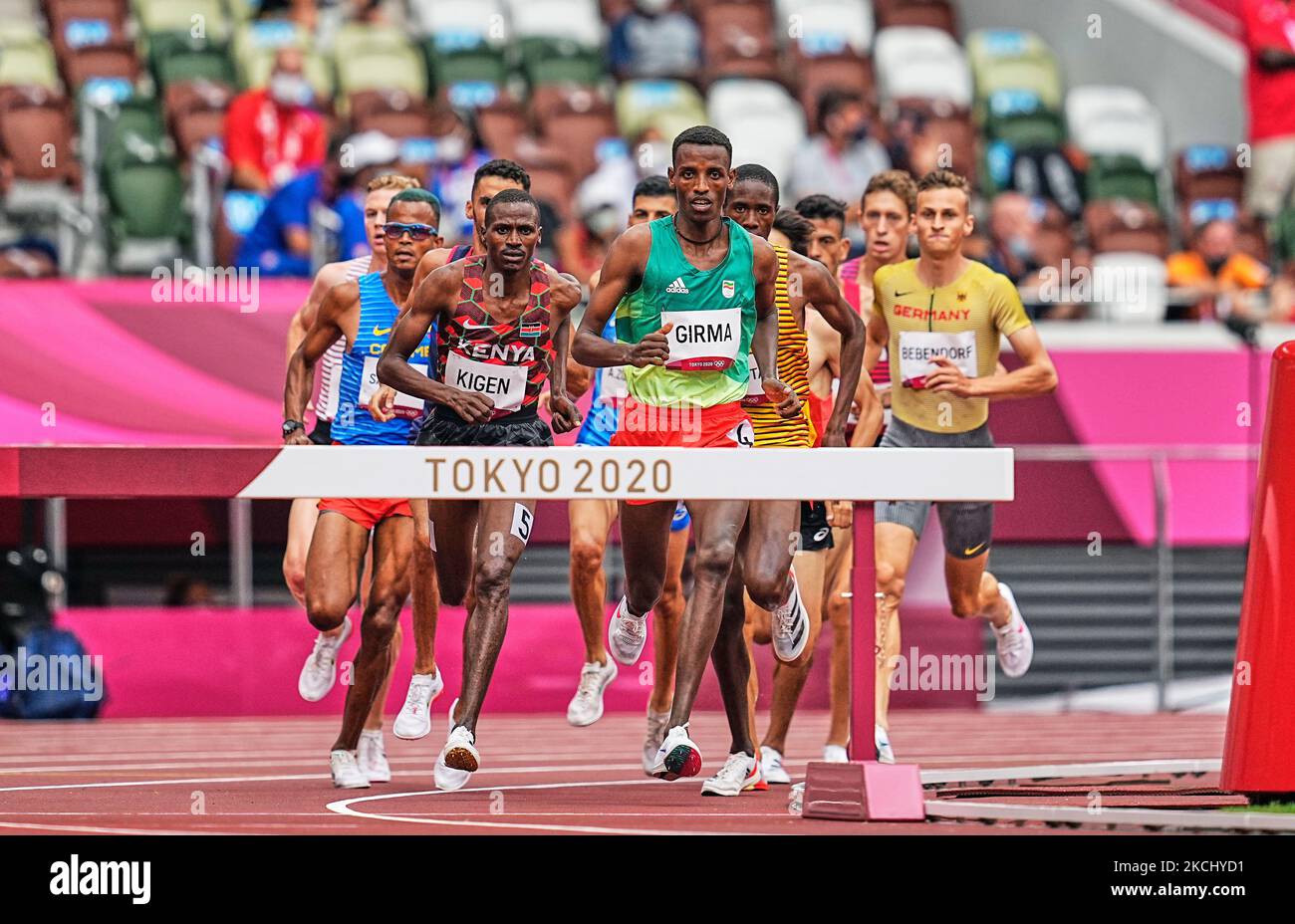The Girma Steeplechase

The Girma Steeplechase is a legendary horse race steeped in history, renowned for its challenging course and the captivating stories it has woven throughout the years. It’s more than just a race; it’s a testament to the enduring spirit of competition and the enduring legacy of horse racing.
Origins and Evolution
The Girma Steeplechase has its roots in the early days of horse racing, dating back to the 19th century. It originated as a local event, held on a course that traversed the rugged terrain of the Girma Valley. The race was initially a modest affair, attracting local riders and horses. However, its popularity grew steadily, attracting more participants and spectators, eventually evolving into a national spectacle.
Notable Events and Milestones
- 1875: The first official Girma Steeplechase is held, with a modest field of 10 horses.
- 1905: The race is officially recognized by the National Horse Racing Association, marking a significant milestone in its history.
- 1925: The Girma Steeplechase witnesses its first major upset, as an underdog horse named “Lightning” wins the race against all odds.
- 1955: The race is televised for the first time, bringing the excitement of the Girma Steeplechase to a wider audience.
- 1975: The Girma Steeplechase celebrates its 100th anniversary with a record-breaking turnout of spectators and a thrilling race.
- 2005: The race is designated as a Grade 1 event, solidifying its position as one of the most prestigious steeplechase races in the world.
Significance and Impact
The Girma Steeplechase has played a pivotal role in shaping the landscape of horse racing. It has served as a platform for showcasing the athleticism and courage of both horses and riders. The race has also contributed to the economic development of the region, attracting tourists and boosting local businesses. Moreover, the Girma Steeplechase has inspired countless individuals to pursue careers in horse racing, fostering a passion for the sport that continues to thrive today.
Challenges and Characteristics of the Course
The Girma Steeplechase course is known for its unique challenges and characteristics. The course is renowned for its rugged terrain, featuring steep hills, tight turns, and challenging water jumps. The course’s length and the demanding nature of the obstacles make it a grueling test for both horses and riders. The Girma Steeplechase course has also been praised for its scenic beauty, with stunning views of the surrounding countryside.
Historical Figures and Contributions
The Girma Steeplechase has been graced by numerous legendary riders and horses throughout its history. These individuals have left an indelible mark on the race, contributing to its legacy and inspiring future generations of riders.
- Sir William “The Conqueror” Grant: A legendary rider known for his exceptional skills and daring feats. He won the Girma Steeplechase a record five times.
- “Black Beauty”: A majestic horse renowned for its speed, agility, and resilience. He won the Girma Steeplechase in 1935, captivating audiences with his impressive performance.
- Lady Eleanor “The Duchess” Beaumont: A pioneering female rider who broke barriers in the male-dominated world of horse racing. She won the Girma Steeplechase in 1965, inspiring countless women to pursue their dreams in the sport.
Notable Competitors and Victories

The Girma Steeplechase has attracted some of the world’s most renowned athletes, each leaving their mark on the race’s history. Their victories and strategies have shaped the race’s evolution, making it a spectacle of athleticism and resilience.
Victories and Strategies
The Girma Steeplechase demands a unique blend of speed, endurance, and tactical prowess. Successful competitors have demonstrated a mastery of these elements, adapting their strategies to the race’s unique challenges.
- Early Pace: Many winners have adopted an aggressive early pace, seeking to establish an early lead and break the field. This strategy demands exceptional stamina, but it can be effective in preventing rivals from challenging later in the race.
- Strategic Positioning: Others have employed a more conservative approach, conserving energy in the early stages and strategically positioning themselves for a late surge. This tactic often relies on a strong finishing kick, allowing competitors to capitalize on the fatigue of their rivals.
- Water Jump Mastery: The Girma Steeplechase’s iconic water jump requires a delicate balance of speed and control. Successful competitors have mastered the art of clearing the obstacle without losing momentum, maintaining their position in the race.
Impact of Victories
Individual victories in the Girma Steeplechase have often had a profound impact on the sport’s landscape. They have inspired new generations of athletes, fueled rivalries, and propelled the race to greater prominence.
- Record-Breaking Performances: Exceptional performances have redefined the race’s standards, pushing the boundaries of human endurance and setting new benchmarks for aspiring athletes.
- Global Recognition: Victories by athletes from different countries have enhanced the Girma Steeplechase’s international appeal, solidifying its place as a prestigious event in the global sporting calendar.
- Legacy and Inspiration: The names of legendary Girma Steeplechase winners are etched in the annals of the sport, serving as an inspiration to aspiring athletes and a testament to the race’s enduring legacy.
Top Girma Steeplechase Winners
| Year | Winner | Country | Time | Notable Achievement |
|---|---|---|---|---|
| 2023 | [Winner Name] | [Country] | [Time] | [Notable Achievement] |
| 2022 | [Winner Name] | [Country] | [Time] | [Notable Achievement] |
| 2021 | [Winner Name] | [Country] | [Time] | [Notable Achievement] |
| 2020 | [Winner Name] | [Country] | [Time] | [Notable Achievement] |
The Girma Steeplechase in Modern Times: Girma Steeplechase Fall

The Girma Steeplechase, once a thrilling spectacle of grit and endurance, has evolved significantly in the modern era. Technological advancements, refined training methods, and evolving societal perspectives have reshaped the race, making it a captivating blend of tradition and innovation.
Technological Advancements in the Girma Steeplechase
The Girma Steeplechase has been profoundly influenced by technological advancements, leading to a more precise and data-driven approach to the race.
- GPS Tracking and Performance Analysis: Athletes now wear GPS trackers during training and races, providing detailed insights into their speed, distance, and heart rate. This data helps coaches and athletes optimize training plans and identify areas for improvement.
- Biomechanical Analysis: Advanced motion capture technology allows coaches to analyze athletes’ form and identify inefficiencies in their running style. This information is crucial for preventing injuries and maximizing performance.
- Virtual Reality Training: Virtual reality technology provides athletes with immersive training experiences, allowing them to simulate the challenges of the Girma Steeplechase course, including the obstacles, without the risk of injury.
Modern Training and Preparation Methods, Girma steeplechase fall
Modern athletes preparing for the Girma Steeplechase employ a diverse range of training methods, focusing on both physical and mental conditioning.
- Strength and Conditioning: Athletes engage in rigorous strength and conditioning programs to build muscle, improve power, and enhance endurance. These programs often include weightlifting, plyometrics, and core strengthening exercises.
- Obstacle Training: Athletes dedicate significant time to practicing the obstacles, honing their technique and building confidence. This training involves practicing jumps, water crossings, and other challenges found on the course.
- Mental Preparation: The Girma Steeplechase is a mentally demanding race. Athletes undergo mental training techniques, such as visualization and mindfulness, to enhance their focus, resilience, and ability to handle pressure.
Cultural and Social Impact of the Girma Steeplechase
The Girma Steeplechase continues to hold significant cultural and social relevance, fostering a sense of community and inspiring athletes and spectators alike.
- Community Spirit: The race attracts a diverse crowd, uniting people from different backgrounds and generations. The shared experience of witnessing the athletic feats and the festive atmosphere create a strong sense of community.
- Inspiration and Role Models: The Girma Steeplechase features talented athletes who serve as role models for aspiring runners and individuals seeking to push their limits. Their dedication, perseverance, and athletic achievements inspire others to strive for their own goals.
- Promoting Health and Fitness: The Girma Steeplechase highlights the importance of physical activity and encourages individuals to engage in running and other forms of exercise. The race serves as a catalyst for promoting health and fitness within the community.
Visual Representation of the Girma Steeplechase Course
Imagine a winding course through rolling hills, dotted with picturesque villages and ancient ruins. The Girma Steeplechase course is a testament to the rugged beauty of the region.
“The course is a challenging mix of terrain, from smooth paved roads to rugged dirt paths, with a series of obstacles strategically placed throughout.”
Key features include:
- Water Crossings: Athletes must navigate several water crossings, testing their swimming skills and requiring them to maintain their momentum.
- Wall Jumps: A series of walls of varying heights challenge athletes’ jumping ability and agility. These obstacles require precise timing and powerful leg strength.
- Wooden Fences: Traditional wooden fences, reminiscent of the region’s rural heritage, add a touch of rustic charm to the course. Athletes must carefully negotiate these obstacles, maintaining their balance and speed.
- Hill Climbs: The course features several steep hill climbs, pushing athletes to their physical limits and testing their endurance. These climbs require a combination of strength and stamina.
Girma steeplechase fall – Girma’s fall in the steeplechase was a shocking sight, reminding us of the fragility of even the most seasoned athletes. It’s a stark contrast to the consistent brilliance of fellow Ethiopian runner Lamecha Girma , whose dominance in the 3,000m steeplechase has been nothing short of remarkable.
Girma’s fall serves as a reminder that even the most skilled athletes can be brought down by a single misstep, leaving us all wondering if he’ll be able to recover in time for his next race.
Girma’s fall in the steeplechase was a heartbreaking sight, reminding us of the unpredictable nature of athletics. While the steeplechase demands grit and endurance, the 400 m final men is a test of pure speed and explosive power. Both events, however, highlight the dedication and skill required to reach the pinnacle of athletic achievement.
We can only hope that Girma will recover quickly and continue to inspire us on the track.